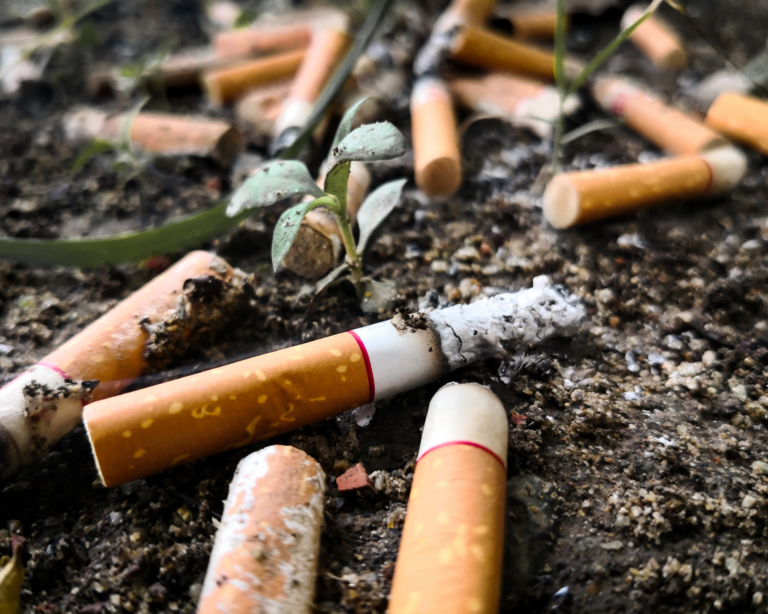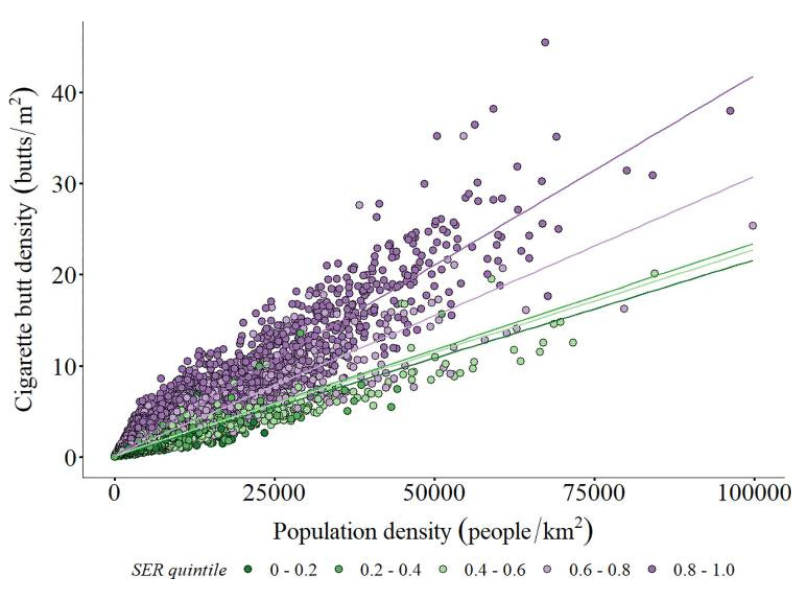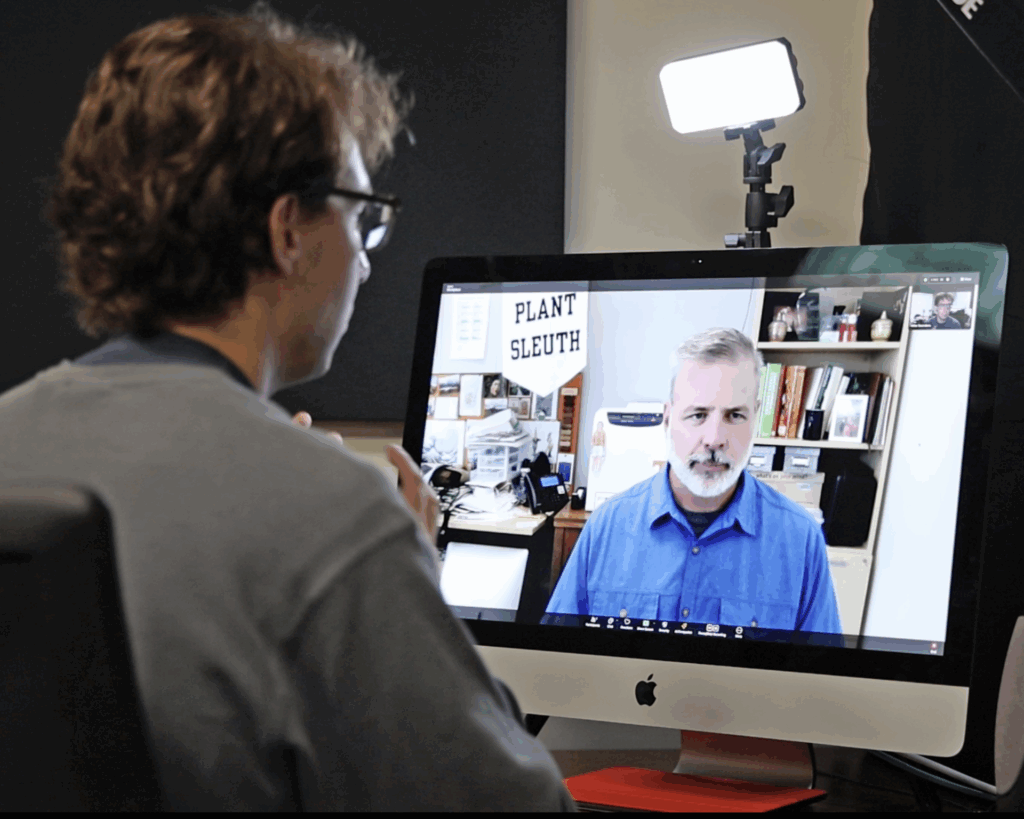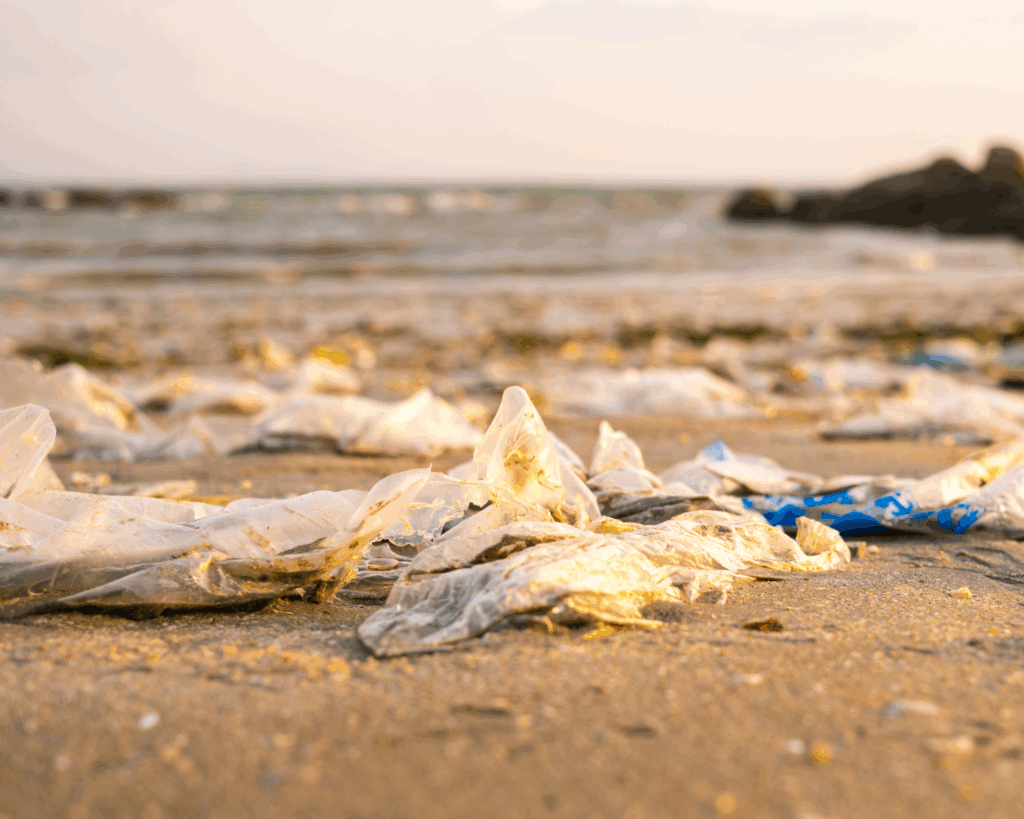Cigarette Butt Litter
Billions of cigarette butts are littered across U.S. streets and sidewalks. Marginalized communities bear the brunt of this pollution.

Read Time: 2 minutes
Published:
In 2022, more than 100 billion cigarette butts littered streets, sidewalks, and gutters across U.S. cities.
As you walk through urban areas, it’s hard not to notice cigarette butts scattered on the ground. Alexander Lowe and his team studied the environmental justice impact of cigarette butt littering in the United States, finding that marginalized communities bear the brunt of this pollution.
The researchers estimated cigarette use and littering across the U.S. by combining national public data on smoking rates, population size, and cigarette consumption. Using CDC data, they projected smoking rates and cigarette use by region, which helped them assess cigarette butt distribution across the country. They also examined how cigarette litter compares between urban and rural areas, as well as how it relates to social and environmental risks.

The figure above compares cigarette butt density (i.e., how many cigarette butts are littered) with population density across neighborhoods with different levels of social and environmental challenges. Each dot represents a neighborhood, with its color indicating risk level, ranging from dark green (low risk) to dark purple (high risk). The lines highlight trends in cigarette litter for neighborhoods grouped by these risk levels, showing how the litter increases as population density and social-environmental risks rise.
The study found that metropolitan areas had the highest cigarette butt density (0.181 butts/m²), while rural areas had the lowest (0.002 butts/m²). Neighborhoods with the highest social and environmental risks, such as high poverty and pollution, had 5.6 times more cigarette butts per square meter than low-risk neighborhoods. Smaller, densely populated areas were hit hardest by cigarette litter.
These findings align with other studies that show higher smoking rates and secondhand smoke exposure in low-income and minority communities. Cigarette butt pollution accumulates over time, contaminating soil and water, harming wildlife, and threatening human health by increasing exposure to toxins. The study recommends focusing cleanup efforts on high-risk areas, raising public awareness, and improving disposal options, alongside stricter regulations and efforts to reduce smoking rates.



